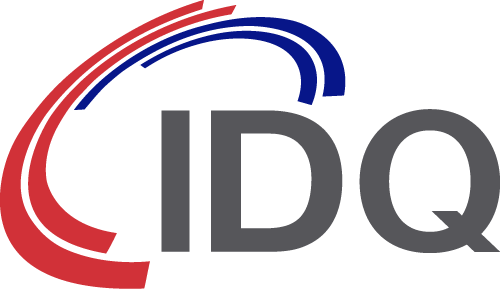lyntia partners with IDQ and others in a proof of concept of Quantum Key Distribution (QKD) in a real-world data centre production network
lyntia leads pioneer test of quantum cryptography for networks using hollow core fibres, in collaboration with Nokia, LuxQuanta, ID Quantique, evolutionQ, OFS | Furukawa Solutions, and Digital Realty.
- The goal was to protect the integrity of a fibre-optic link between data centres and demonstrate that quantum cryptography is compatible with new “Hollow Core” fibre-optic technology
- It is also a globally leading initiative because of its interoperability of chained QKD manufacturers, which allows extending the distance between the data centres where encryption takes place
- This is a breakthrough in terms of improved security to provide cryptographic protection against advancements in decryption by quantum computers, Artificial Intelligence (AI) and Machine Learning (ML)
Industry-leading companies have teamed up to conduct a proof of concept of quantum cryptography systems also known as Quantum Key Distribution (QKD) in a real-world data centre production network environment. The goal was clear: to secure a fibre-optic link from Digital Realty’s data centre and, in turn, to demonstrate on one leg of the connection the compatibility of quantum cryptography with a new, very low-latency fibre-optic technology.
Currently, the transmission of information is predominantly protected by asymmetric encryption protocols based on mathematical algorithms such as number factorization problems. However, advancements in machine learning, artificial intelligence, and quantum computing threaten the security of this cryptographic approach. In particular, it is estimated that, in the coming years, quantum computers will be able to break current cryptography based on mathematical problems with relative ease, putting the security of all digital communications of large companies at serious risk.
Two major quantum-safe cryptographic alternatives have been developed to address this security threat: Post-Quantum Cryptography (PQC) and Quantum Key Distribution (QKD). PQC is a software-based solution that employs complex mathematical algorithms to resist quantum computing attacks. However, since it relies on mathematical problems, there remains the possibility that future advancements could eventually solve these, potentially compromising its security.
lyntia, aware of the need for readiness and adoption of quantum-safe cryptographic security solutions, has driven this proof of concept exploiting the second alternative: Quantum Key Distribution. QKD allows the secure exchange and generation of cryptographic symmetric keys between two locations protecting them by the laws of quantum physics. This physical method does not rely on mathematical algorithms, offering a genuinely future-proof approach to information security which can be used alongside other cryptographic techniques to provide greater defence and resiliency.
In this test, two versions of QKD technology, from the two manufacturers LuxQuanta (CV-QKD) and ID Quantique (DV-QKD), along with a Quantum Key Management System (QKMS) from evolutionQ, were used to protect data centre access connections. This is a breakthrough for companies in terms of security, introducing this new technology capable of providing cryptographic protection even against quantum computers.
The other major breakthrough of this test is the use of ‘Hollow core’ fibre cable, manufactured by OFS| Furukawa Solutions, in the first connection with the data centre. This innovative fibre was presented a few months ago in another real field test and allows light to travel almost 46% faster than conventional optical fibres, thus reducing transmission latency by more than 30%, which makes it particularly interesting for data centres.
Once the connection between the data centre and the customer is secured with LuxQuanta’s CV-QKD systems using the “Hollow-Core” fibre, a second deployment of QKD systems, in this case from the manufacturer ID Quantique, is made via conventional fibre from lyntia to extend the reach of the connection by several tens of kilometres.
This ambitious collaboration culminates in the seamless integration of Nokia and evolutionQ systems, ensuring effective orchestration of the deployment. Nokia has provided high-capacity, low-latency, and highly available encryption systems utilizing quantum-secure keys to ensure in-flight data confidentiality, alongside its certified geo-redundant Security Management Server (SMS) systems.
By continuously monitoring the Quantum-Safe optical data centre connectivity service, the SMS can automatically ensure quantum-computer-safe connectivity by reverting to classic physics-based keys in the event of DDoS attacks on the QKD layer or failures in both key generation and distribution, resulting in a highly available Quantum-Safe optical data centre connectivity service.
Equally crucial is evolutionQ’s role in the success of the project. Its key management system, known as BasejumpQDN, ensures efficient management of QKD keys between nodes and manages the delivery of these to Nokia’s encryptors at the right time.
In short, this test allows the daisy-chaining of two QKD systems to transmit quantum keys over a longer distance over a production network, allowing to reach longer distances of up to 200 kilometres with just one pair of devices. From now on, it will be possible to carry out this transmission to more datacentres as more equipment is installed.
A proof of concept ahead of the curve
This test is ahead of the curve, offering companies an excellent level of communications security that can be controlled by their own departments and preparing them to solve cyber-security problems for when quantum computing, AI and ML can hack most of today’s encryption strategies.
lyntia is leading this initiative together with the other partners participating in this proof of concept. On the one hand, the manufacturers of QKD equipment, the companies LuxQuanta and ID Quantique, the company evolutionQ as QKD integrator, as well as Nokia, which is responsible for the manufacture of DWDM and OFS| Furukawa Solutions, manufacturer of the ‘Hollow Core’ fibre cable. Digital Realty also took part in the trial by providing the data centre that hosted the launch event.
This project anticipates the growing threat facing the cybersecurity of digital communications, serving as an example and a call to action for multiple sectors, especially for data centres. The implementation of new cryptographic security solutions, such as QKD and related technologies, is already a reality.
Quotes from the companies
“At lyntia, we continue to drive innovation to provide our customers with the highest quality communications platform. The success of this quantum cryptography test demonstrates our position as a neutral operator, enabling our customers to implement their own encryption systems with confidence, and reinforces our commitment to protecting data from the challenges of the future.”
Eduardo Duato, CTO of lyntia.
“Our field-proven and telecom-grade QKD solutions have been built for efficient scaling of quantum-safe networks across large geographies and country borders. We’ve been delighted to be involved in this innovative project and look forward to helping lyntia to provide new quantum-safe services to their customers,”
Grégoire Ribordy, CEO of ID Quantique.
“This test has made a cryptographic protection solution for data centre access connections a reality. We are pleased to have been part of a cutting-edge technology project to increase the cybersecurity of the connections that make the data economy possible,”
Javier Montemayor, Chief Operating Officer of Digital Realty.
“This collaborative work demonstrates the unique advantages that hollow core fibres offer for distributing quantum keys along with the encrypted data stream. Successfully applying these technologies within a real-world data centre interconnect, proves their potential to enable future secure communications.”
David Knight, Product Line Manager at OFS| Furukawa Solutions.
“This was a great opportunity for Nokia and our partners to take quantum-security a step further. Using a defense-in-depth approach, we can help ensure quantum-safe outcomes as data is transported throughout the network. With our 1830-PSI platforms and our 1830 Secure Management Server acting in the role of key management and orchestrator, we were able to deliver high-performance, scalable, quantum-safe optical network connectivity.”
Rafael DeFermin, Senior Vice President of Network Infrastructure Europe at Nokia.
“This proof of concept demonstrates that quantum cryptography is no longer just a theoretical concept but a mature reality, a practical solution capable of securing critical optical links that connect data centres to the world. Today, we have showcased the interoperability of our product, NOVA LQ®, by integrating it with our partners’ systems and proving its ability to coexist in the same optical band as data, even over low-latency fibres. This ensures secure and efficient transmission within existing optical networks.
”Vanesa Díaz, CEO of LuxQuanta
“We’re excited to be working with lyntia to demonstrate these new technologies with real world use cases. It’s important to have new tools like QKD as organizations look to bolster their cybersecurity capabilities, and create resiliency in our infrastructure with a defence in depth approach. Cybersecurity is a team sport and this initiative builds on our existing partnerships to deliver end-to-end solutions for clients. We’re proud to have our BasejumpQDN platform efficiently connecting all these components together while enabling interoperability and scalability.”
Michele Mosca, CEO of evolutionQ.


